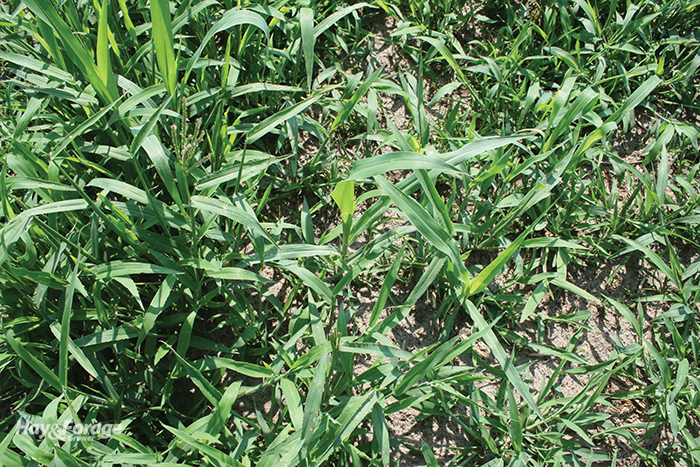It’s crabgrass season! |
| By Mike Rankin, Managing Editor |
|
|
|
There is a lot written and said about beating the cool-season forage summer slump. Annual warm-season grasses such as sorghum species or native grasses often top the list of suggestions. However, let’s not forget about one of the old standbys that has been both villainized and worshiped through the years — crabgrass. We’ve reached the point in the summer where the sight of crabgrass invasion into cool-season grass pastures or in a growing crabgrass monoculture are a welcomed relief, at least by some graziers. Cows simply devour crabgrass, a species that can be grown across a wide swath of the U.S. “Crabgrass can be a great forage alternative to feed cattle due to its high yield and nutritive value,” notes Bruno Pedreira, an extension forage specialist with the University of Tennessee. “Compared to other warm-season grasses, such as bahiagrass and bermudagrass, crabgrass can offer higher nutritive value.” Pedreira explains that crabgrass has a clump-type growth habit and spreads with stolons, which are aboveground stems that grow horizontally and can produce new roots. Although it’s officially considered an annual forage, crabgrass has the ability to produce and drop large amounts of seed on the soil surface. During one growth cycle, most crabgrass users allow it to mature and drop seed that will comprise the next year’s crop. Pedreira has been on a few Tennessee farms that had crabgrass pastures planted more than 10 years ago without being mechanically reseeded. “A good stand (of crabgrass) can be achieved by seeding 3 to 5 pounds of pure live seed per acre,” Pedreira says. “Drill seeds from 1/4 to 1/2 inch deep. Seeds planted too deep results in a poor pasture stand where weeds are more likely to become a challenge.” Crabgrass seeds can also be broadcast, but Pedreira recommends using the higher end of the seeding rate range or more and to cultipack after seeding for improved seed-to-soil contact. This will also reduce seed losses due to any heavy rainfall event. With adequate moisture, seed germination begins when the soil temperature reaches 55°F. “Pasture establishment can be enhanced through nitrogen fertilization at planting or when tillers are in the early stages,” Pedreira notes. “Nitrogen improves tillering, and consequently, reduces weed pressure. When grazing or haying, keep stubble heights above 3 to 4 inches; this will help to ensure a quick stand recovery. Stands harvested with too short of a residual will result in weed encroachment and reduced yields. In the University of Tennessee Beef & Forage Center’s variety trials (2018 to 2022), crabgrass has produced from 3 to 6 tons per acre with crude protein ranging from 11% to 22% and total digestible nutrients from 60% to 70%. There simply are not too many downsides to incorporate crabgrass into a grazing system. Improved varieties are available, it offers good palatability, it reseeds itself, and it helps fill the decline in cool-season pasture growth. |

